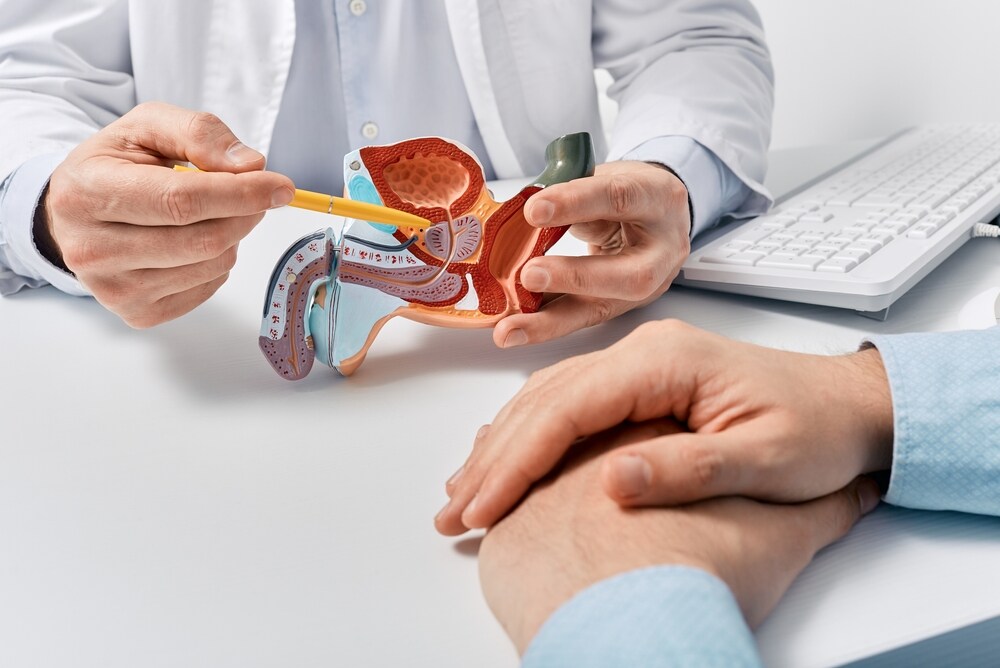Let’s be real—every penis is a little different, and that’s totally normal. Just like faces and body shapes, penises come in all kinds of sizes, shapes, and angles. Whether you’re curious about your own body or just want to understand more about male anatomy, learning about the different types of penises can be both eye-opening and reassuring.
Some curves left or right, some are wider or longer, and some change more in size during an erection; this variety is all part of human nature. In this article, we’ll break down the common types, what’s medically normal, and why there’s no such thing as the “perfect” penis.
Understanding Male Anatomy
Basic Anatomy and Function
The penis is a complex organ with a primary role in reproduction and urination. It consists of three main parts: the root, the body (or shaft), and the glans (or head). The shaft contains erectile tissue that fills with blood during arousal, leading to an erection. This process is essential for sexual intercourse and the delivery of sperm.
- Root : Anchors the penis to the pelvic bones.
- Shaft : Contains erectile tissue.
- Glans : The sensitive tip, often referred to as the head.
Average Size and Shape Statistics
Penis size and shape vary widely among individuals. According to a study published in the British Journal of Urology International (BJUI), the average erect penis size is approximately 5.16 inches in length and 4.59 inches in circumference. However, these numbers are just averages, and there is a wide range of normal sizes.
- Average erect length : 5.16 inches
- Average erect circumference : 4.59 inches
- Variation : Normal sizes can vary significantly
Common Penis Shapes and Sizes
Curved Upward
A penis that curves upward is often referred to as a “banana” shape. This curvature can be natural and is usually not a cause for concern unless it causes pain or difficulty during intercourse.
- Natural curvature : Often harmless
- Potential issues : Pain or difficulty during sex
Curved Downward
A downward curve, sometimes called a “hook” shape, is another common variation. Like the upward curve, it is typically benign unless it interferes with sexual activity.
- Common variation : Usually not problematic
- Interference : May affect sexual activity
Straight
A straight penis is one that does not have a noticeable curve. This shape is often considered the “standard,” but it is just one of many normal variations.
- Standard shape : No noticeable curve
- Perception : Often seen as typical
C-Shaped
A C-shaped penis curves to the side. This shape can be due to natural anatomical differences or conditions like Peyronie’s disease, which involves fibrous scar tissue.
- Side curvature : Can be natural or due to Peyronie’s disease
- Considerations : May require medical attention if severe
Penis Girth Variations
Bigger Base with Narrow Head
Some penises have a wider base and a narrower head, resembling a cone. This shape can affect how condoms fit and feel during intercourse.
- Cone shape : Wider base, narrower head
- Condom fit : May require specific types
Narrow Base with Larger Head
Conversely, a narrow base with a larger head can resemble a mushroom. This shape might provide different sensations during intercourse.
- Mushroom shape : Narrow base, larger head
- Sensations : Can vary during sex
Average Girth
An average girth is typically around 4.59 inches in circumference when erect. This is the most common size and is considered normal.
- Common size : 4.59 inches in circumference
- Normal variation : Widely accepted as standard
Thicker-than-Average Girth
A thicker-than-average girth can provide a fuller sensation during intercourse but may require more lubrication to prevent discomfort.
- Fuller sensation : May enhance sexual experience
- Lubrication : Important for comfort
Penis Length Categories
Shorter-than-Average Length
A penis shorter than the average 5.16 inches when erect is still within the range of normal. It is important to remember that size does not determine sexual satisfaction or fertility.
- Normal range : Below 5.16 inches
- Sexual satisfaction : Not determined by size
Average Length
The average length of 5.16 inches is a common benchmark, but individual satisfaction and function are more important than meeting this average.
- Benchmark : 5.16 inches
- Individual satisfaction : More important than size
Longer-than-Average Length
A longer-than-average penis can be over 6 inches when erect. While some may view this as desirable, it can also present challenges, such as discomfort for partners.
- Over 6 inches : Considered longer than average
- Challenges : Potential discomfort for partners
Penis Appearance Characteristics
Skin Color Variations
Penis skin color can vary widely, even within the same individual. This variation is normal and does not affect function or health.
- Wide variation : Normal and healthy
- No impact on function : Purely cosmetic
Circumcised vs. Uncircumcised
Circumcision involves the removal of the foreskin and can affect sensitivity and hygiene. Both circumcised and uncircumcised penises are normal and healthy.
- Circumcised : Foreskin removed
- Uncircumcised : Foreskin intact
Hair Patterns
Hair patterns on the penis and surrounding area can vary. Some men have more hair, while others have less. This is a natural variation and does not affect health.
- Natural variation : Amount and pattern of hair
- No health impact : Purely aesthetic
Vein Visibility
Visible veins on the penis are common and result from the blood vessels that supply the erectile tissue. This is a normal anatomical feature.
- Common feature : Visible veins
- Anatomical normality : Part of the blood supply system
Growers vs. Showers
Defining Growers and Showers
“Growers” are penises that significantly increase in size when erect, while “showers” appear larger when flaccid but do not grow as much. Both types are normal.
- Growers : Significant size increase when erect
- Showers : Larger flaccid size, less growth
Factors Affecting Penis Size Changes
Several factors can influence whether a penis is a grower or a shower, including genetics, temperature, and arousal levels.
- Genetics : Major determinant
- Environmental factors : Temperature and arousal
Penis Health and Maintenance
Importance of Regular Erections
Regular erections are important for maintaining penile health, as they promote blood flow and tissue health. Erections can occur during sleep or arousal.
- Blood flow : Essential for tissue health
- Regular occurrence : During sleep or arousal
Lifestyle Factors Affecting Penis Health
Lifestyle choices such as diet, exercise, and avoiding smoking can significantly impact penis health. Maintaining a healthy lifestyle supports overall sexual health.
- Healthy lifestyle : Diet, exercise, no smoking
- Impact : Supports sexual health
Sexual Health and Safety
Safe Sex Practices for Penis Health
Practicing safe sex is crucial for preventing sexually transmitted infections (STIs) and maintaining penis health. Using condoms and getting regular health check-ups are key practices.
- Condom use : Prevents STIs
- Regular check-ups : Important for health
Importance of Lubrication
Lubrication can prevent discomfort and injury during intercourse. It is especially important for those with thicker girth or longer length.
- Prevents discomfort : Essential for comfort
- Reduces injury risk : Important for all sizes
Final Thoughts
Understanding the diversity of penis types is important for personal health and sexual satisfaction. Embracing this diversity can lead to better self-awareness and improved sexual health.
Frequently Asked Questions
What are the most common types of penises?
The most common types of penises include straight, curved upward, curved downward, and C-shaped. Each type is normal and varies among individuals.
Can penis shape affect sexual performance?
Penis shape can affect sexual performance, but it is not the sole determinant. Factors like communication, technique, and compatibility are more important.
Is there a “normal” penis size?
There is no single “normal” penis size, as it varies widely among individuals. The average erect size is around 5.16 inches, but variations are normal.
Are certain penis types more prone to specific health issues?
Certain penis types, like those with severe curvature, may be more prone to conditions like Peyronie’s disease. Regular check-ups can help manage these issues.


